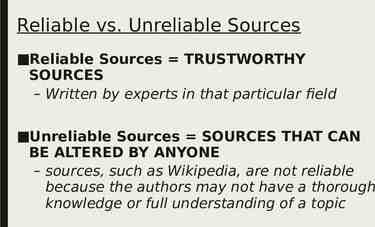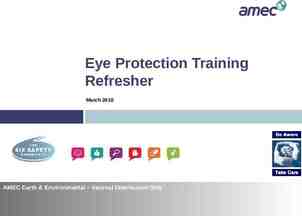Emergency Process/ Procedures August 13, 2019
25 Slides2.66 MB

Emergency Process/ Procedures August 13, 2019

Agenda: District Guide for Emergency Operations Identify Key Areas of the YC Evacuation Plan Identify Evacuation Areas and Equipment Quick Reference Posters Conduct Table-Top Emergency Situation Catapult Overview Sign Up for Catapult Messaging Safety Committee Objectives for 2019-2020

Objectives of the Session: Know where to access emergency information on the district/college websites Delineate District and College Emergency/Safety Documents Know campus roles/responsibilities in the event of an emergency Know how to respond to specific emergencies on campus and practice Know Levels of Reporting Incidents in Catapult Log in to Catapult and Receive Notifications https://youtu.be/gO8N3L aERg

District Guide for Emergency Operations Key Points: Values, objectives and over arching philosophy Purpose; history of the document pg. 2 Govt. Codes 3101 and 3102 pg. 3 Incident Command Center Incident Commander Role pg. 4-5 Phases of an Emergency pg. 6 (ICC) pgs. 1&14-21 Forms pre and post pgs. 35-41 Yuba College Evacuation Plan Guide for Emergency Operations YUBA COMMUNITY COLLEGE DISTRICT This plan is a preparedeness document. It is intented to be read and understood before an emergency. Guide to Emergency Operations

Purpose & History The District plan is an overarching philosophy which provides values and objectives as to what an emergency plan should include. The Yuba College plan is the blueprint of how this will be accomplished. “The purpose of the Guide for emergency Operations is to consolidate all District disaster procedures into a single publication providing District personnel with a convenient set of useable instructions for dealing with disasters and emergencies.”

Authority/Reference Developed according to and in compliance of Federal and State legislation Government Code 3101. “Disaster Service Worker” Government Code 3102(a) Take and subscribe to the oath or affirmation required by this chapter. CHAPTER 8. Oath or Affirmation of Allegiance for Disaster Service Workers and Public Employees [3100 - 3109] ( Heading of Chapter 8 amended by Stats. 1972, Ch. 590. ) The oath or affirmation set forth in Section 3 of Article XX of the Constitution of California.

YC Chain of Command Chain of Command: Emergency Chancellor of YCCD Administrator in charge Appointed Incident Commander (President or VP) Chief of Police Safety Officer/Risk Manager

Primary Function of the Incident Command Center (ICS) “Provides a central location of authority and information and allows for face-to-face coordination among personnel who must make emergency decisions”.

Activation of the ICC “The ICC will be activated when any emergency situation occurs or might occur of such magnitude that it will require a large commitment of resources from two or more YCCD departments over an extended period of time.”

Function of the Incident Command Team Incident Commander Public Information Officer Liaison Officer Safety Officer Incident Log Scribe Incident Command Team: Operations Section Planning/Intelligence Section Logistics Section Finance/Administration/Legal Section

FIVE LEVELS OF SEMS/NIMS 1. Field Level (Campus) 2. Local Level 3. Operational Level 4. Regional Level 5. State Level

SEMS AND NIMS: Only individuals with SEMS/NIMS training carry out functions of the ICC Campus Contact for Training: Officer Adam Pharris Q: Who should take the NIMS Training Program? A: The NIMS Training Program is intended for emergency management officials and administrators responsible for budgets, planning and procurement, who require guidance on the development and provision of NIMS training. The NIMS Training Program informs local, state, territorial, tribal, and federal policy-makers; elected and appointed officials; government emergency management agencies and trainers (i.e. NIMS Coordinators); managers overseeing those in mission-critical positions and organizations and professional development; and human resource managers setting and overseeing personnel policies and personnel with responsibility to develop NIMSrelated guidance or training, credentialing, or personnel qualifications information. https://www.fema.gov/nims-training

Phases of Emergency:

ICC on Yuba College Campus : Catapult Notifications -- Public Events Technician on behalf of College President Room/Building Sweep– Assigned Building Deans and Directors Post Notice on Doors – Assigned Deans and Directors Direct Traffic – West Parking Lot Director of Counseling East Parking Lot – Director of Public Health Communication System Operators - DSPS Support/Elevator Operators – SCC Director, Public Safety, Director of Public Safety AT TIME OF EMERGENCY/EVACUATION ALWAYS Evacuate first, then call 911 Collect evacuation supply back pack/s Collect MSDS binders for each building Evacuate according to map/route posted by door Watch for students with ear plugs who may not be aware of evacuation Provide support to DSPS students, faculty and staff as needed Assigned Deans and Directors Sweep Building and Place Sign on Doors Traffic Control, West Parking Lot/Aman Kandola East Parking Lot/Clark Smith Credit Cards: GH Javaheripour, Claudette Michel, Zulema Zermeno, Carla Tweed, Karen Stanis Provide counseling assistance on site as needed Dean

In the EVENT: Evacuation Lock Down Shelter in Place

Objectives: Expedite movement of persons from hazardous areas. Control evacuation traffic. Provide transportation for those w/out vehicles or special needs. Provide perimeter control for evacuated areas Provide for the procurement allocation and use of necessary transportation resources and law enforcement resources by means of mutual aid or other agreements. Acquisition of rental vehicles if needed. Y C I L PO

Evacuation Maps Evacuation Locations: Primary - Gymnasium Secondary – Olive Hill

1. FAQ: 2. 1) In the event of an emergency incident, are there safety protocols in place? 3. 2) How are those protocols shared with students? 4. 3) Is there any safety drills done like active shooter? 4) Is there protocol on when a lockdown occurs? How is that triggered? 5) When is Catapult triggered? 6) Is there criteria for a lockdown/shelter in place? 5. 6. Yes, the district has a comprehensive emergency handbook, posters are posted in each classroom. Follow maps posted inside/outside the classroom door. Currently students sign up for emergency notifications when they register. The Catapult system will notify students in the event of on campus emergencies. Safety drills are scheduled to take place after Summer 2019 practice events have taken place. Catapult is triggered through the office of the college President and/or Campus Police in accordance with the type of event. Yes, lockdowns take place, the procedure is to go room to room Campus Police initiate utilizing the catapult system. Yes, each building creates their “shelter in place” protocols. The YCCD Guide for Emergency Operations, page 23, lists steps you should take to shelter in place.

CAMPUS SAFETY RESOURCES: Keenan Safety Training: https://www.keenan.com/safetyshorts/ IIPP- YCCD Illness and Injury Prevention Plan “The IIPP is designed to allow for effective management of safety in the workplace and to ensure safe and healthful working conditions for all employees. Implementing each of the program elements will allow compliance with the IIPP standard.”

EMERGENCY EQUIPMNET CAMPUS LOCATIONS: AED Equipment: (1) Located in Campus Police Office and (1) in each of the two patrol cars 2000 Building (1) 2100 Building (1) Gymnasium (1)

EMERGENCY EQUIPMENT TO BE PURCHASED EMERGENCY/EVACUATION KITS ELEVATOR EVACUATOR CHAIRS ADDITIONAL AED MACHINES

WEBSITE LINKS: Emergency Procedures Campus Safety YCCD Emergency Procedures Clery Reports Emergency Notification Sign Up for Students Safety Committee https://yc.yccd.edu/campus/campus-safety/ https://yc.yccd.edu/student/emergencyprocedures/ https://www.yccd.edu/central-services/campus-safety/ https://www.yccd.edu/central-services/campus-safety/jeanne-clery-report/ https://yc-app.yccd.edu/student/EmergencyNotification https://district.yccd.edu/pages/yc-new/CommitteeDetail?aid 13

TABLE-TOP EXERCISE: Break out into groups Using the tools from today’s training create a plan; SCENARIO: You have received a Catapult notification on your phone which says; there is an active shooter on campus- location unknown. You are in the 800 building, what steps do you take to ensure your safety and that of the students in your classroom? Tabletop Exercises: A tabletop exercise simulates an emergency situation in an informal, stress-free environment. The participants, usually comprised of decision-making level staff and responders, gather to discuss simulated procedures and general problems/solutions in the context of an emergency scenario. The focus is on training and familiarization with roles, procedures, and responsibilities relative to the emergency synopsis and potential injects. (THIS IS A DRIL).

Safety Committee Objectives 2019-2020 Develop a funding source to purchase the necessary equipment for emergencies/evacuation situations Recruit students to serve on the committee to give a voice to their concerns.

CATAPULT TRAINING Devin Crosby






